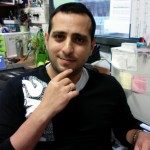About
The global malaria eradication program was created by WHO in 1950 in order to face the burden of
malaria disease. One of the strategies suggested by the vector control consultative group to restrict the
role of mosquitoes in disease transmission is paratransgenesis, i.e. genetic engineering of a mosquito’s
symbiont microorganisms to reduce its vectorial capacity. Furthermore, it has been revealed that RNAi
is an efficient method for gene knockdown in insects and that bacteria are efficient for double stranded
RNA production and delivery to different insect species. Likewise, it has been confirmed that RNase III
(rnc) mutant bacteria are more efficient to release more dsRNA. The Asaia bacterium is frequently found
in the microbiota of Anopheles mosquitoes and has been introduced as a potent paratransgenesis
candidate to fight against malaria. In this project, we will develop the tools to use Asaia spp. for
producing and delivering double stranded RNA (dsRNA) into the mosquito vector Anopheles. We will
characterize the rnc operon in Asaia spp. and create an rnc mutant strain. We will engineer this strain
to produce dsRNA in Anopheles body against semaphorin and Miso, two important genes for mosquito
development and reproductive success respectively. Finally, using these engineered strains, we will
evaluate the efficacy of this approach as a potential tool for vector control and mosquito genetics studies.


